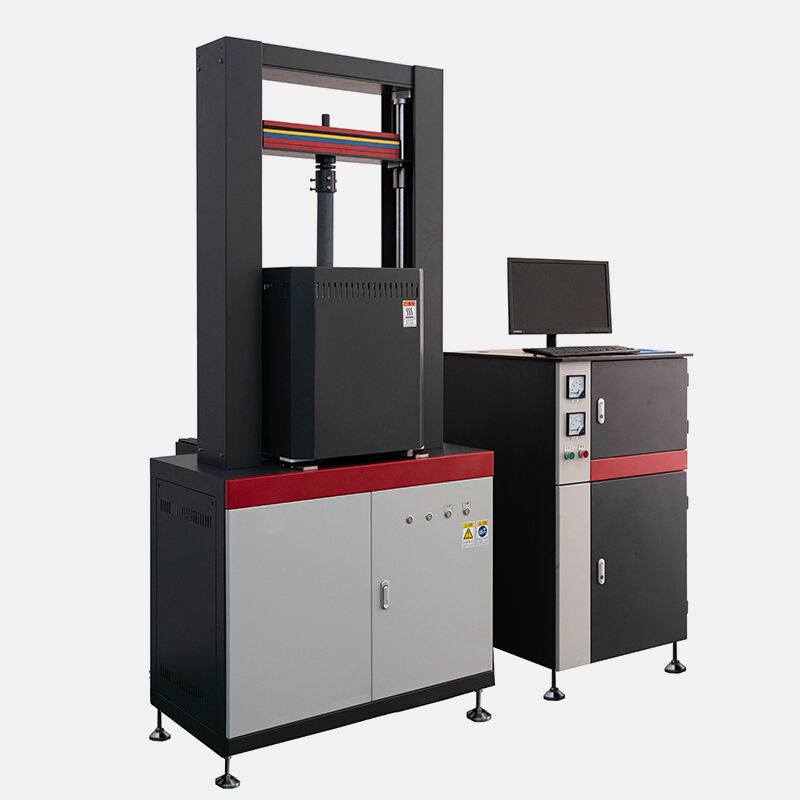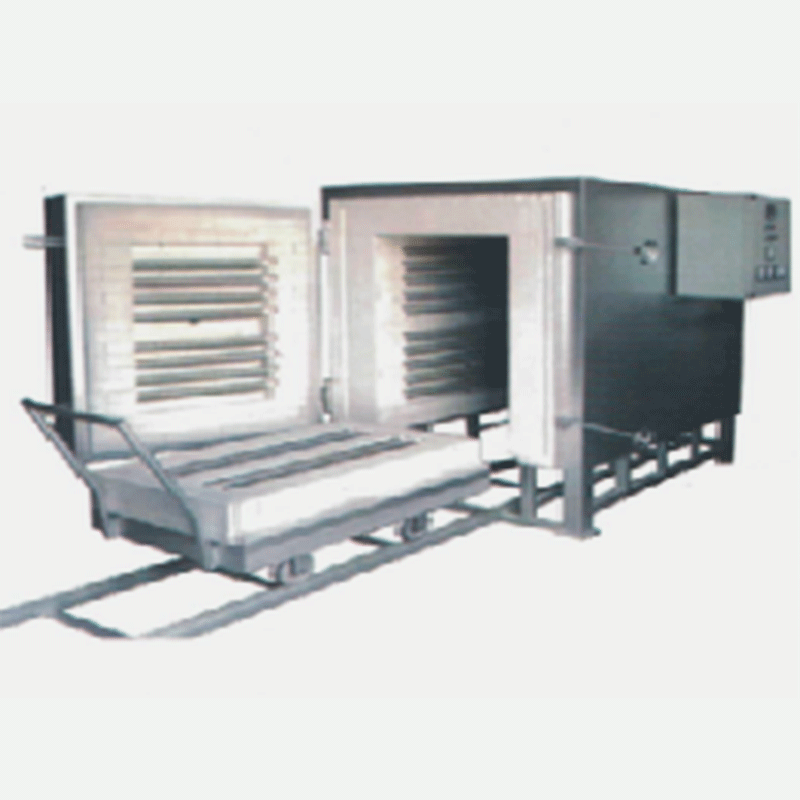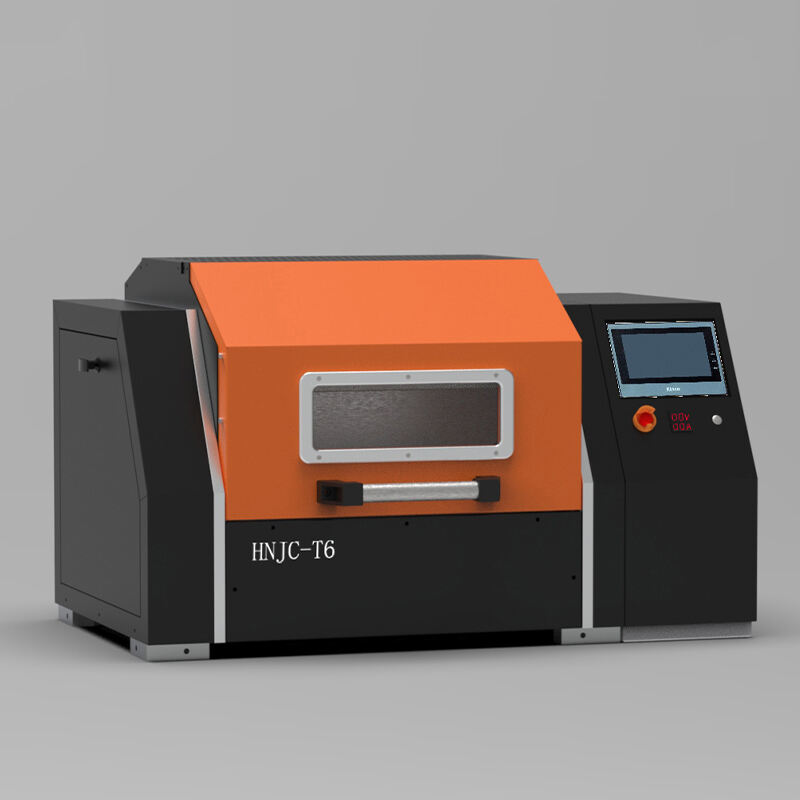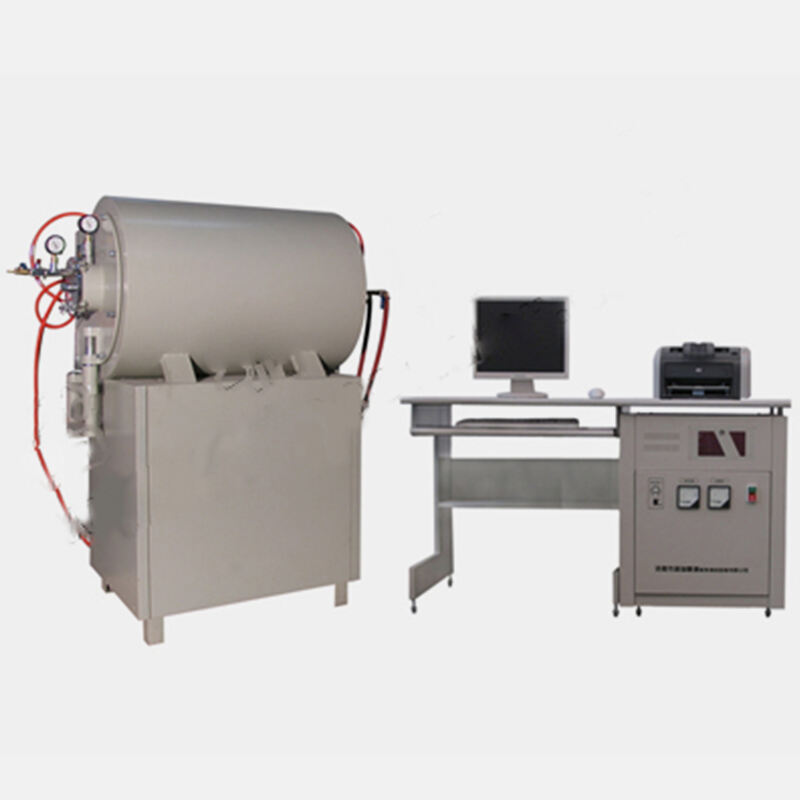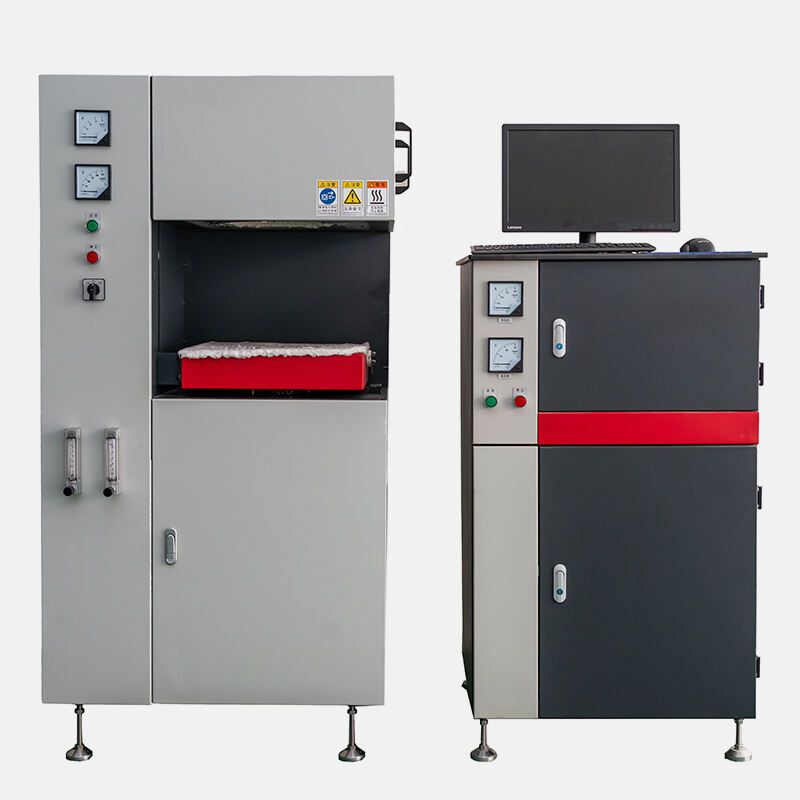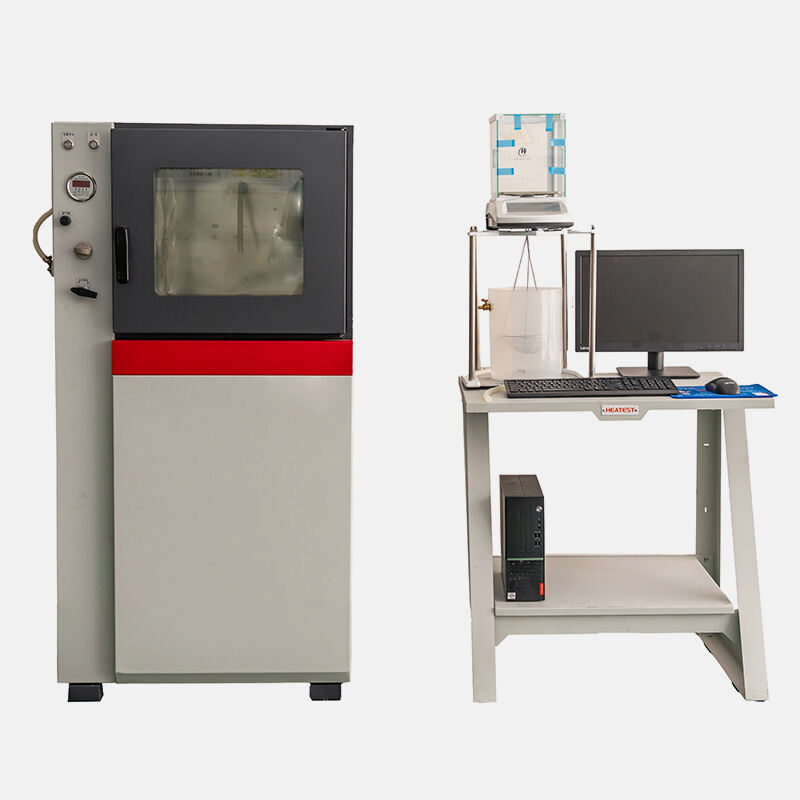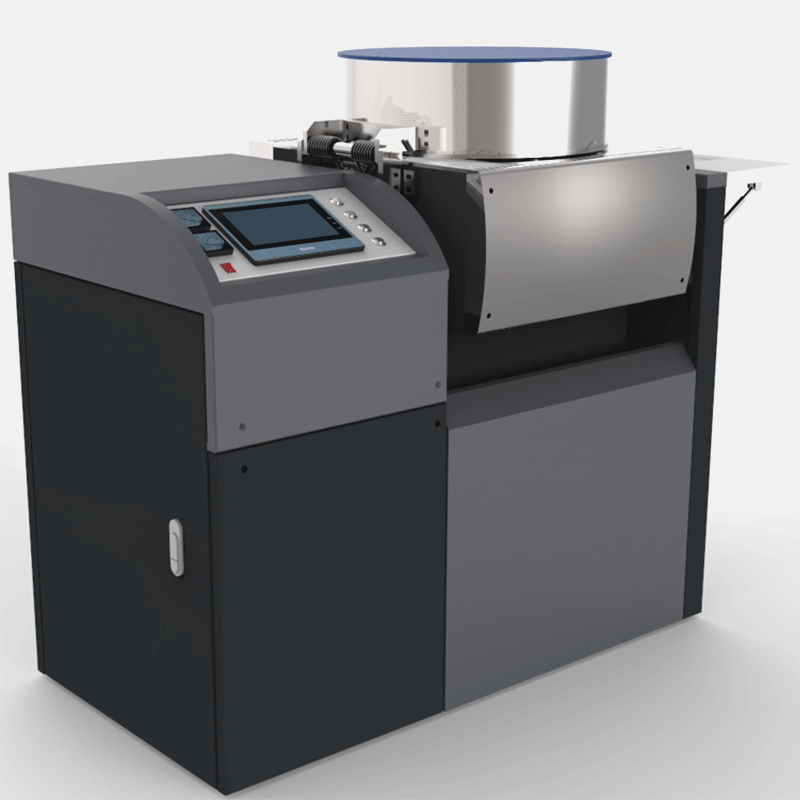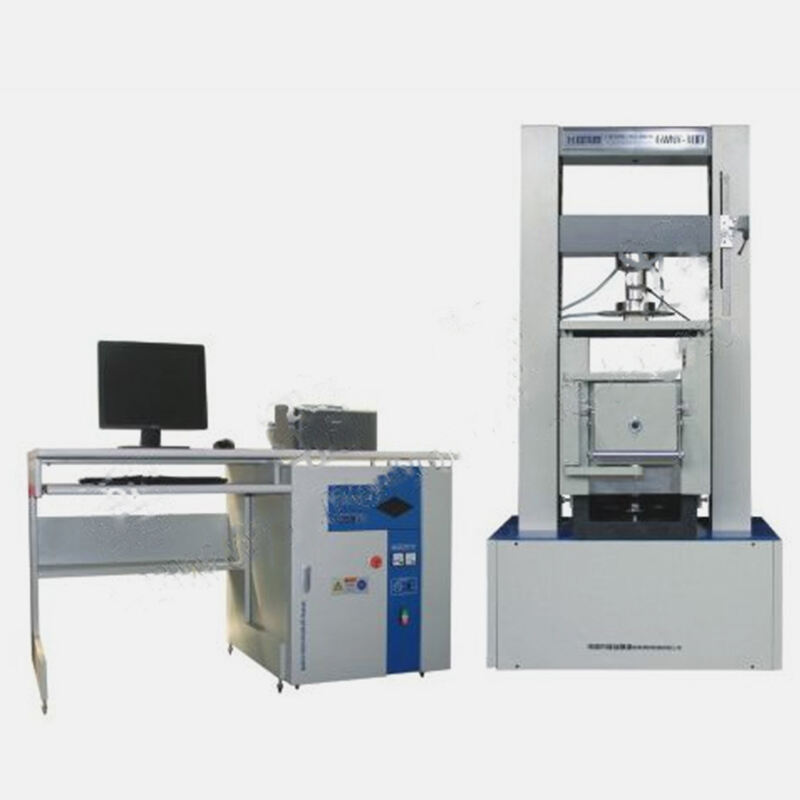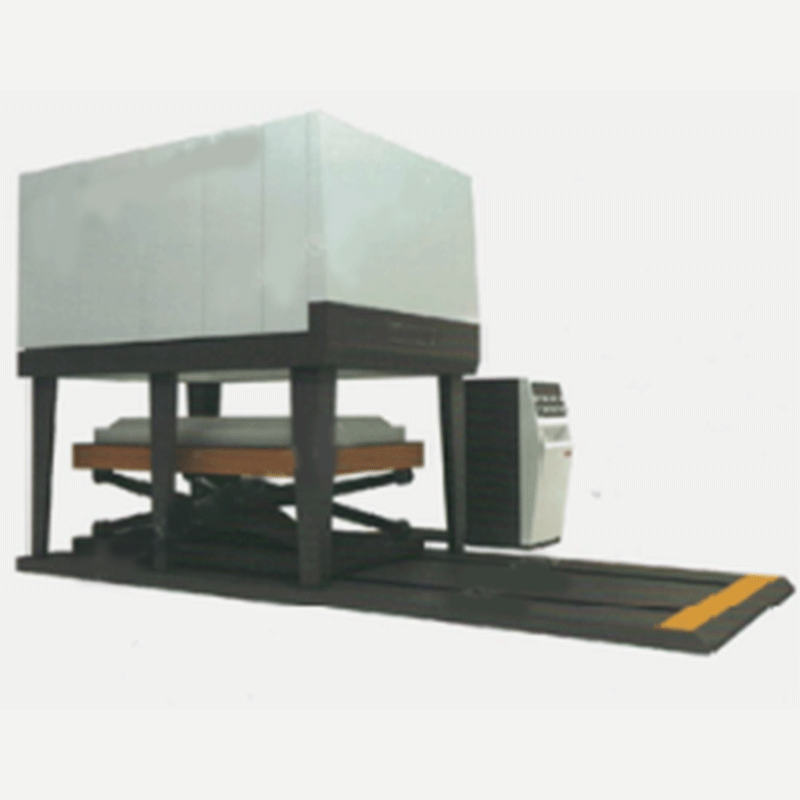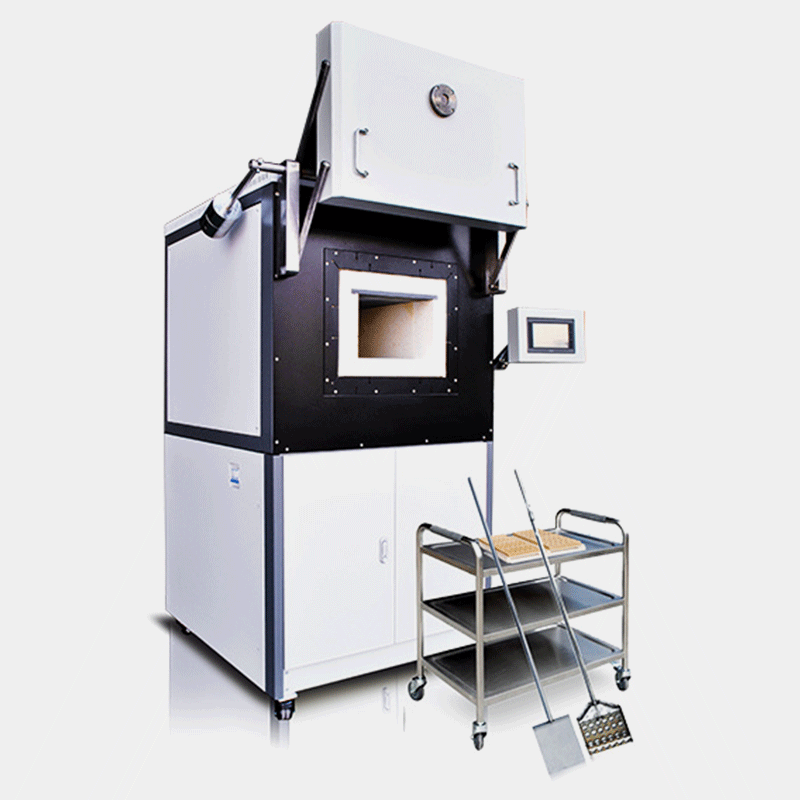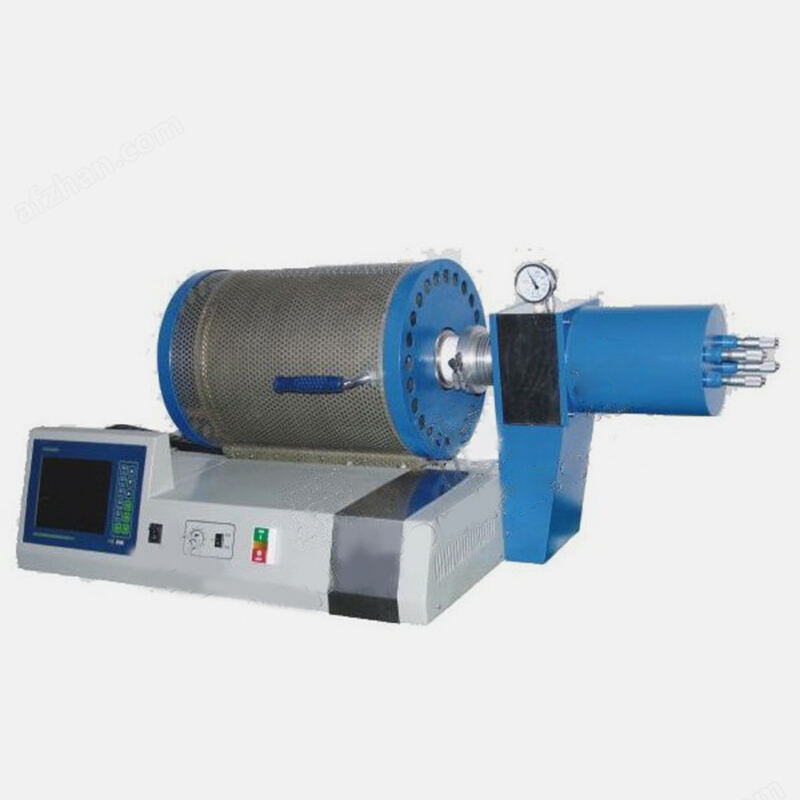ຫຼັກການເຮັດວຽກ ແລະ ພິດເມືອງການນຳໃຊ້ຂອງເຄື່ອງທົດສອບການສວມໃນອຸນຫະພູມປົກກະຕິ
ໃນການທົດສອບຄວາມຕ້ານທານຕໍ່ການສວມໃຊ້ຂອງວັດສະດຸຕ່າງໆ ເຊັ່ນ: ວັດສະດຸຕ້ານໄຟ, ແກ້ວ, ແລະ ວັດສະດຸໂລຫະ, ເຄື່ອງທົດສອບການສວມໃຊ້ທີ່ອຸນຫະພູມປົກກະຕິມັກຖືກນຳໃຊ້. ເຄື່ອງເຫຼົ່ານີ້ສາມາດປະເມີນ ແລະ ທົດສອບຄວາມຕ້ານທານຕໍ່ການສວມໃຊ້ຂອງວັດສະດຸໃນສະພາບອຸນຫະພູມປົກກະຕິ, ເຮັດໃຫ້ມັນເປັນເຄື່ອງມືທີ່ສຳຄັນສຳລັບການຄົ້ນຄວ້າວັດສະດຸ ແລະ ການຄວບຄຸມຄຸນນະພາບ. ບົດຄວາມນີ້ຈະອະທິບາຍຢ່າງລະອຽດກ່ຽວກັບຫຼັກການເຮັດວຽກ ແລະ ພິດເມນການນຳໃຊ້ຂອງເຄື່ອງທົດສອບການສວມໃຊ້ທີ່ອຸນຫະພູມປົກກະຕິ.
I. ຫຼັກການເຮັດວຽກຂອງເຄື່ອງທົດສອບການສວມໃຊ້ທີ່ອຸນຫະພູມປົກກະຕິ
ຫຼັກການຂອງເຄື່ອງທົດສອບການສວມໃນອຸນຫະພູມປົກກະຕິແມ່ນເພື່ອຈຳລອງຂະບວນການເສຍດສີ ແລະ ການສວມຂອງວັດສະດຸພາຍໃຕ້ເງື່ອນໄຂການເຮັດວຽກຈິງ, ເພື່ອປະເມີນຄວາມຕ້ານທານຕໍ່ການສວມ. ການດຳເນີນງານປົກກະຕິຂອງອຸປະກອນນີ້ແມ່ນຂຶ້ນກັບອົງປະກອບຕໍ່ໄປນີ້:
1. ຫຼັກການດຳເນີນງານຂອງຫົວໜ່ວຍທົດສອບ
ຫົວໜ່ວຍທົດສອບແມ່ນໂຄງສ້າງຫຼັກຂອງເຄື່ອງທົດສອບການສວມໃນອຸນຫະພູມປົກກະຕິ, ໃຫ້ການຮັບຮອງທາງກົນຈັກສຳລັບການທົດສອບທັງໝົດ. ຫົວໜ່ວຍດັ່ງກ່າວມັກໃຊ້ໂຄງສ້າງຂອງແຟຣມທີ່ມີຄວາມເຂັ້ມແຂງສູງເພື່ອຮັບນ້ຳໜັກ ແລະ ຄວາມເຄັ່ງຕຶງຕ່າງໆ. ຫົວໜ່ວຍທົດສອບຖືກຕິດຕັ້ງດ້ວຍອຸປະກອນຈັບໂຕຢ່າງເພື່ອຈັບວັດສະດຸທີ່ກຳລັງຖືກທົດສອບ.
2. ຫຼັກການດຳເນີນງານຂອງຄູ່ເສຍດສີ
ຄູ່ມືການເສຍດສີດແມ່ນຊິ້ນສ່ວນສຳຄັນທີ່ຈຳລອງຂະບວນການເສຍດສີດ, ໂດຍປົກກະຕິຈະປະກອບມີລໍ້ເສຍດສີດ ຫຼື ຈານເສຍດສີດ. ຄູ່ມືເຫຼົ່ານີ້ຈະສຳຜັດກັບພື້ນຜິວຕົວຢ່າງ ແລະ ສ້າງການເຄື່ອນທີ່ໃນຂະນະທີ່ທົດສອບ, ເຊິ່ງຈະຈຳລອງການເສຍດສີດ ແລະ ການສຶກກະຍອຍໃນເງື່ອນໄຂການໃຊ້ງານຈິງ. ວັດສະດຸ ແລະ ຄຸນສົມບັດຂອງພື້ນຜິວຄູ່ມືເສຍດສີດສາມາດເລືອກ ແລະ ປັບໄດ້ຕາມຄວາມຕ້ອງການຂອງການທົດສອບ ເພື່ອໃຫ້ເຂົ້າກັບເງື່ອນໄຂການທົດສອບທີ່ແຕກຕ່າງກັນ.
3. ຫຼັກການດຳເນີນງານຂອງລະບົບການນຳໃຊ້ພະລັງງານ
ລະບົບການນຳໃຊ້ພະລັງງານຈະນຳໃຊ້ຄວາມກົດດັນ ຫຼື ພະລັງງານໃນຂະນະທີ່ທົດສອບເພື່ອຈຳລອງຄວາມເຄັ່ງຕຶງທາງກົນຈັກໃນເງື່ອນໄຂການເຮັດວຽກຈິງ. ລະບົບນີ້ໂດຍປົກກະຕິຈະໃຊ້ອຸປະກອນອາດາເລັກ ຫຼື ອຸປະກອນໄຮໂດຼລິກເພື່ອຄວບຄຸມພະລັງງານທີ່ຖືກນຳໃຊ້ຢ່າງແນ່ນອນ. ໂດຍການປັບພະລັງງານ, ສາມາດຈຳລອງສະພາບການເສຍດສີດ ແລະ ການສຶກກະຍອຍໃນເງື່ອນໄຂການເຮັດວຽກທີ່ແຕກຕ່າງກັນ, ແລະ ສາມາດປະເມີນຄວາມຕ້ານທານຕໍ່ການສຶກກະຍອຍຂອງວັດສະດຸໃນເງື່ອນໄຂຄວາມກົດດັນທີ່ແຕກຕ່າງກັນ.
4. ຫຼັກການຂອງລະບົບຄວບຄຸມ
ລະບົບຄວບຄຸມເປັນ "ສະໝອງ" ຂອງເຄື່ອງທົດສອບການສຶກກະດິດທີ່ອຸນຫະພູມປົກກະຕິ, ຮັບຜິດຊອບໃນການຄວບຄຸມແລະຈັດການຂະບວນການທົດສອບທັງໝົດ. ມັກຈະຖືກຄວບຄຸມໂດຍຄອມພິວເຕີ້ ແລະ ສາມາດຕັ້ງຄ່າ ຫຼື ປັບປຸງພາລາມິເຕີການທົດສອບເຊັ່ນ: ຄວາມໄວ, ພະລັງງານ, ແລະ ເວລາທົດສອບ. ລະບົບຄວບຄຸມຍັງສາມາດຕິດຕາມຂໍ້ມູນຕ່າງໆ ໃນຂະນະທີ່ກຳລັງທົດສອບໄດ້ແບບເວລາຈິງ ເພື່ອຮັບປະກັນຄວາມຖືກຕ້ອງ ແລະ ຄວາມໜ້າເຊື່ອຖືຂອງການທົດສອບ.
5. ຫຼັກການຂອງລະບົບການເກັບກຳຂໍ້ມູນ
ລະບົບການເກັບກຳຂໍ້ມູນຈະບັນທຶກ ແລະ ວິເຄາະຂໍ້ມູນທີ່ຖືກສ້າງຂຶ້ນໃນຂະນະທີ່ກຳລັງທົດສອບ, ລວມທັງແຮງສຶກກະດິດ, ປະລິມານການສຶກ, ອຸນຫະພູມ ແລະ ອື່ນໆ. ເຄື່ອງທົດສອບການສຶກກະດິດທີ່ອຸນຫະພູມປົກກະຕິໃນຍຸກທັນສະໄໝມັກຈະຕິດຕັ້ງເຊັນເຊີທີ່ມີຄວາມແມ່ນຍຳສູງ ແລະ ອຸປະກອນການເກັບກຳຂໍ້ມູນ, ທີ່ສາມາດບັນທຶກຂໍ້ມູນການທົດສອບແບບເວລາຈິງ ແລະ ວິເຄາະ, ປຸງແຕ່ງຜ່ານຄອມພິວເຕີ້. ຂໍ້ມູນເຫຼົ່ານີ້ສາມາດນຳໃຊ້ເພື່ອປະເມີນຄວາມຕ້ານທານຕໍ່ການສຶກຂອງວັດສະດຸ ແລະ ສ້າງລາຍງານການທົດສອບຢ່າງລະອຽດ.
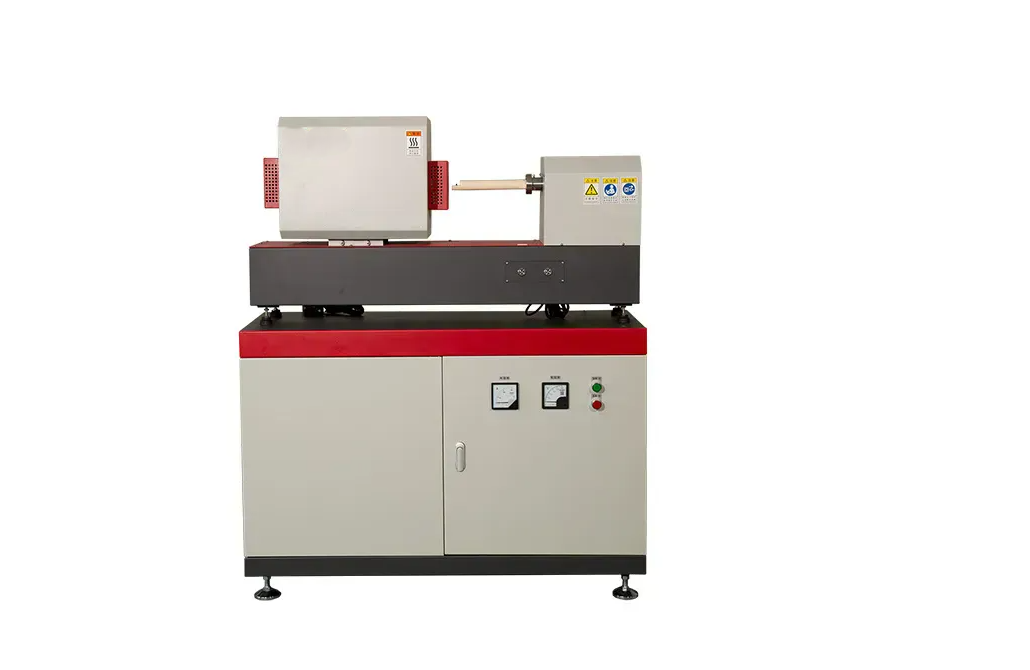
II. ການນຳໃຊ້ເຄື່ອງທົດສອບການສຶກກະດິດທີ່ອຸນຫະພູມປົກກະຕິ
1. ວັດສະດຸຕ້ານຄວາມຮ້ອນ: ຄວາມຕ້ານທານຕໍ່ການສວມໃຊ້ຂອງວັດສະດຸຕ້ານຄວາມຮ້ອນມີຜົນໂດຍตรงຕໍ່ອາຍຸການໃຊ້ງານ ແລະ ຄວາມໜ້າເຊື່ອຖື. ເຄື່ອງທົດສອບການສວມໃຊ້ໃນອຸນຫະພູມປົກກະຕິສາມາດຈຳລອງສະພາບການເຄື່ອນໄຫວ ແລະ ການສວມໃຊ້ຂອງວັດສະດຸຕ້ານຄວາມຮ້ອນໃນສະພາບອຸນຫະພູມປົກກະຕິ, ເພື່ອປະເມີນຄວາມຕ້ານທານຕໍ່ການສວມໃຊ້ ແລະ ໃຫ້ຂໍ້ມູນອ້າງອີງໃນການເລືອກວັດສະດຸ ແລະ ການປັບປຸງຂະບວນການ.
2. ວັດສະດຸເຊຣາມິກ: ວັດສະດຸເຊຣາມິກຖືກນຳໃຊ້ຢ່າງກວ້າງຂວາງໃນອຸດສາຫະກຳ ແລະ ຊີວິດປະຈຳວັນ ເນື່ອງຈາກມີຄວາມແຂງ ແລະ ຕ້ານທານຕໍ່ການກັດກ່ອນທີ່ສູງ. ເຄື່ອງທົດສອບການສວມໃຊ້ໃນອຸນຫະພູມປົກກະຕິສາມາດທົດສອບຄວາມຕ້ານທານຕໍ່ການສວມໃຊ້ຂອງວັດສະດຸເຊຣາມິກໃນເງື່ອນໄຂການເຄື່ອນໄຫວທີ່ແຕກຕ່າງກັນ, ເຊິ່ງຊ່ວຍໃຫ້ນັກຄົ້ນຄວ້າສາມາດປັບປຸງສູດສ່ວນ ແລະ ຂະບວນການເພື່ອຍົກສູງຄຸນນະພາບຜະລິດຕະພັນ.
3. ວັດສະດຸໂລຫະ: ວັດສະດຸໂລຫະຖືກນໍາໃຊ້ຢ່າງກວ້າງຂວາງໃນການຜະລິດເຄື່ອງຈັກ, ການກໍ່ສ້າງ, ແລະ ສາຂາອື່ນໆ. ເຄື່ອງທົດສອບການສວມໃຊ້ທີ່ອຸນຫະພູມປົກກະຕິສາມາດຈໍາລອງການເຄື່ອນໄຫວແລະການສວມໃຊ້ຂອງວັດສະດຸໂລຫະໃນເງື່ອນໄຂການເຮັດວຽກຕ່າງໆທີ່ອຸນຫະພູມປົກກະຕິ, ເພື່ອປະເມີນຄວາມຕ້ານທານຕໍ່ການສວມໃຊ້ ແລະ ຊ່ວຍນໍາໃນການເລືອກວັດສະດຸ ແລະ ການອອກແບບໂຄງສ້າງ.
4. ໂລຫະປະສົມ ແລະ ການປິ່ນປົວພື້ນຜິວ: ວັດສະດຸຈໍານວນຫຼາຍດີຂຶ້ນໃນດ້ານຄວາມຕ້ານທານຕໍ່ການສວມໃຊ້ໂດຍຜ່ານການຊຸບໂລຫະປະສົມ ຫຼື ການປິ່ນປົວພື້ນຜິວ. ເຄື່ອງທົດສອບການສວມໃຊ້ທີ່ອຸນຫະພູມປົກກະຕິສາມາດທົດສອບຜົນກະທົບຂອງຂະບວນການຊຸບໂລຫະປະສົມ ແລະ ການປິ່ນປົວພື້ນຜິວທີ່ແຕກຕ່າງກັນ, ເພື່ອຊ່ວຍໃຫ້ນັກຄົ້ນຄວ້າເລືອກວິທີການປິ່ນປົວພື້ນຜິວທີ່ດີກວ່າ ເພື່ອປັບປຸງອາຍຸການໃຊ້ງານ ແລະ ປະສິດທິພາບຂອງວັດສະດຸ.
ຜະລິດຕະພັນທີ່ແນະນຳ
ຂ່າວຮ້ອນ
-
ຄຸນສົມບັດຂອງເຕົາຖ່ວຍຄຳ
2025-12-22
-
ການວັດແທກຢ່າງແນ່ນອນຕໍ່ "ຄວາມທົນທານ" ຂອງວັດສະດຸໃນອຸນຫະພູມສູງ - ອຸປະກອນທົດສອບ Nanyang JZJ Co., Ltd. ສຳລັບການທົດສອບຄວາມບີບອັດພາຍໃຕ້ອຸນຫະພູມສູງ ຖືກສົ່ງອອກໄປສະຫະລັດອາເມລິກາ.
2025-12-17
-
ຕົວເລືອກທີ່ເຊື່ອຖືໄດ້ຂອງຍັກໃຫຍ່ດ້ານການຂຸດຄົ້ນບູຮານໃນທະວີບອາຟຣິກາ! Nanyang JZJ Testing ຊ່ວຍປ້ອນ "ພະລັງແຮງຫຼັກ" ທີ່ມີຄຸນນະພາບໃຫ້ກັບອຸດສາຫະກໍາການຂຸດຄົ້ນຄຳຂອງຊິມບາເບເວ.
2025-12-08
-
ຫຼັກການເຮັດວຽກ ແລະ ພິດເມືອງການນຳໃຊ້ຂອງເຄື່ອງທົດສອບການສວມໃນອຸນຫະພູມປົກກະຕິ
2025-11-07
-
ເຄື່ອງປະສົມທີ່ໃຊ້ໃນການວິເຄາະດ້ວຍໄຟ ແລະ ສາຍພົວພັນຂອງມັນ
2025-10-13
-
ໃຫ້ທ່ານຮູ້ກ່ຽວກັບເຕົາຖລອມແຖບໄຟ
2025-09-23
-
ເຄື່ອງທົດສອບຄວາມເສຍຫາຍຈາກພາລະບົດ (RUL) ແລະ ເຄື່ອງທົດສອບຄວາມເຄັ່ງຕຶງ (CIC) ຂອງການແກ້ໄຂບັນຫາທົ່ວໄປ
2025-08-25
-
ວິທີການໃຊ້ເຄື່ອງສີດແສງເອັກຊເຣີ້ໃນອຸດສາຫະກຳທີ່ຕ້ານທານຄວາມຮ້ອນ?
2025-08-18
-
ວັດຖຸດິບໃດທີ່ເໝາະສົມສຳລັບການທົດສອບໃນເຕົາອຸນຫະພູມສູງ?
2025-08-14
-
ຮ່ວມມືກັນສ້າງອະນາຄົດທີ່ດີກວ່າ: ຄູ່ຮ່ວມງານຈາກອິນເດຍ Ants Prosys ມາຢ້ຽມຢາມຖານການຜະລິດຂອງ JZJ Testing
2025-08-04

 EN
EN
 AR
AR
 BG
BG
 FR
FR
 DE
DE
 HI
HI
 IT
IT
 PL
PL
 PT
PT
 RU
RU
 ES
ES
 TL
TL
 IW
IW
 ID
ID
 UK
UK
 VI
VI
 TH
TH
 TR
TR
 FA
FA
 MS
MS
 UR
UR
 BN
BN
 KM
KM
 LO
LO
 PA
PA
 MY
MY
 KK
KK

